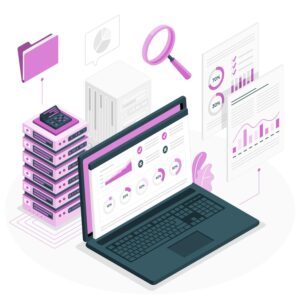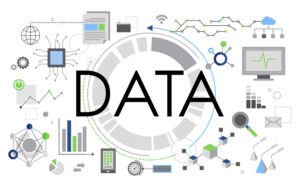Most chatbots are built on language models that require vast amounts of data to function. Often, this data is sourced from web pages and other information found on the internet. OpenAI’s ChatGPT, too, deploys the same methods to source its data from the web to support its functioning and its answering capabilities. Web crawlers—automated bots that scour the internet and the billions of websites hosted there—are responsible for the majority of this data collection. OpenAI has come out with a new web crawler that addresses several concerns that have plagued the AI firm since the issues of copyright and artificial intelligence came to the fore. While built to draw information and collect data from the internet, OpenAI states that GPTBot is capable of avoiding sites that have paywalled content and skipping pages that entail personal information. The development is significant since the firm faces numerous suits in court that allege copyright infringement, in addition to a heavy reliance on published news articles.
Despite the features that allow the web crawler to avoid copyrighted material and sources that violate OpenAI’s policies, GPTBot’s launch has still kicked up debates surrounding the ethical aspects of training AI language models using information on the web. Since this might have an impact on privacy and security, numerous individuals have expressed concern surrounding the implications of such technologies scalping information for their respective AI models. However, it is also important to note that web crawler programs have been around for quite some time now, and the controversy surrounding their use is limited to the deployment of these bots and the sourced information in a publicly accessible chatbot. The upcoming sections look at the various details surrounding OpenAI’s GPTBot and what it entails.
How Does GPTBot Work?

GPTBot avoids personal information and copyrighted content.
GBTBot runs through the numerous websites on the web to enhance the underlying language model’s information by extending the AI dataset that powers its regular operation. In addition to this, web crawlers like GPTBot can also enhance AI safety by picking up on authentic data and allowing the chatbot to present precise information and avoid hallucinatory responses. Interestingly, GPTBot allows website owners to block access to it and protect the content on their website from being used to enhance the AI model. This comes after there have been considerable concerns from media websites and publishers that ChatGPT has made unauthorized use of information and data present on their sites. The development is significant because major media sites and a sizable proportion of the world’s top firms have blocked access to the web crawler.
Website owners can block GPTBot by making modifications to their site’s robots.txt file. Alongside the complete restriction of GPTBot, users can also allow only partial access to their website. The data derived from the bot can be used to enhance GPT-4 along with future models like GPT-5. Given that OpenAI is competing with Google’s offerings, the latter is also looking to get ahead with its Gemini models. The rivalry will continue to gather speed since both firms are consistently launching new products based on their extant AI offerings. Since web crawlers often end up aiding web traffic, several website owners are intent on allowing GPTBot and contributing to OpenAI’s dataset. Now that ChatGPT is online, too, future AI datasets from OpenAI and the resulting language models will be fascinating to explore.
Why is GPTBot Different from Other Web Crawlers?

OpenAI has run into numerous problems due to copyright claims and privacy issues.
While most web crawlers on search engines like Google often scour the web to enhance the performance of search tools, GPTBot’s purpose remains starkly different from its contemporaries. OpenAI’s web crawler primarily accesses publicly available web pages only to enhance existing AI datasets and the performance of their LLMs. Since earlier versions such as GPT-3.5 as well as GPT-4 were limited to September 2021 until the chatbot was linked to the internet, web crawls allow the firm to enhance the language models’ reference data with more recent information. Based on OpenAI’s details of the GPTBot web crawler, the program actively avoids copyrighted content and pages with personal information—a key point of difference from other crawlers. Moreover, GPTBot also intuitively scrubs any personal information from its crawls to avoid privacy concerns.
GPTBot selects websites based on the potential they present, which includes sitemaps, backlinks, and existing performance information, to ensure OpenAI’s language models get access to high-quality data. The web crawler then extracts text and converts other media to processible formats to make it available for the underlying deep learning models that pervade the LLMs’ architectures. However, despite GPTBot’s novel approach to scalping information from the web, it is not immune to limitations and might encounter hurdles in processing websites with dynamic JavaScript elements and multimedia encoded into the framework. Nevertheless, much like its language model offerings, OpenAI is constantly improving GPTBot.
The Implications of GPTBot

Constant updates to LLMs’ datasets will enable better performance and accuracy of information.
GPTBot presents a new approach to collecting data for language models and their resultant applications. While there still remains considerable debate surrounding the privacy and ethical aspects of using the internet and all the information within for the furthering of AI technology, GPTBot still makes a conscious effort to skip past personal information and paywalled content. This is significant since it furthers the commitment of large tech firms toward responsible AI and incorporates stronger checks to prevent the use of private and copyrighted information. As OpenAI continues to face numerous suits for potential infringement, the nature of AI and copyright remains dubious since the precise manner in which language models use collected information is still hard to define. In this regard, crawlers like GPTBot might make a small difference by avoiding the use of private and protected content.
FAQs
1. When was GPTBot released?
OpenAI’s web crawler—GPTBot—was released in August 2023. It introduces a new method for collecting information where copyrighted media and personal data are avoided, along with allowing website owners the option to prevent the bot from crawling their page.
2. What is GPTBot used for?
GPTBot is used to crawl the internet for data and information. The data sourced from publicly available pages will be used to enhance OpenAI’s future language models.
3. Can GPTBot be blocked from crawling a webpage?
Yes, site owners who want to block GPTBot can do so by making alterations to their webpage’s “robots.txt” file.
